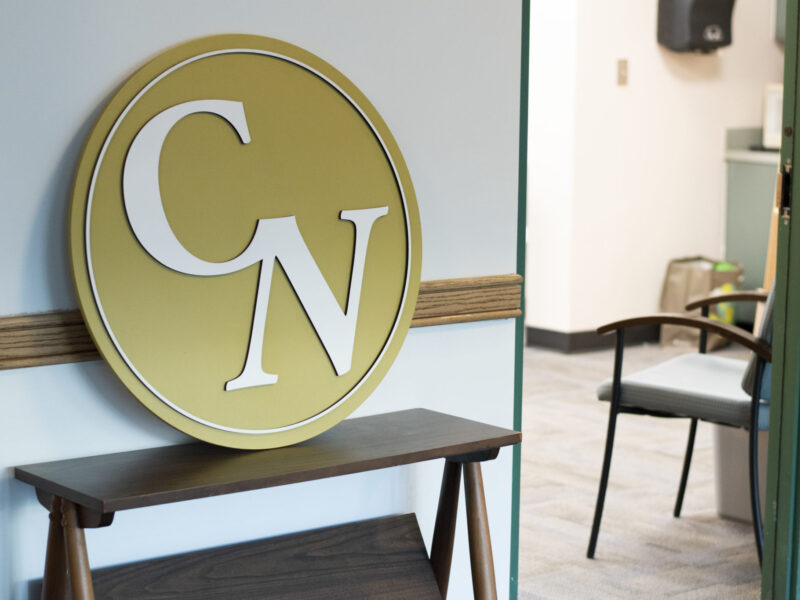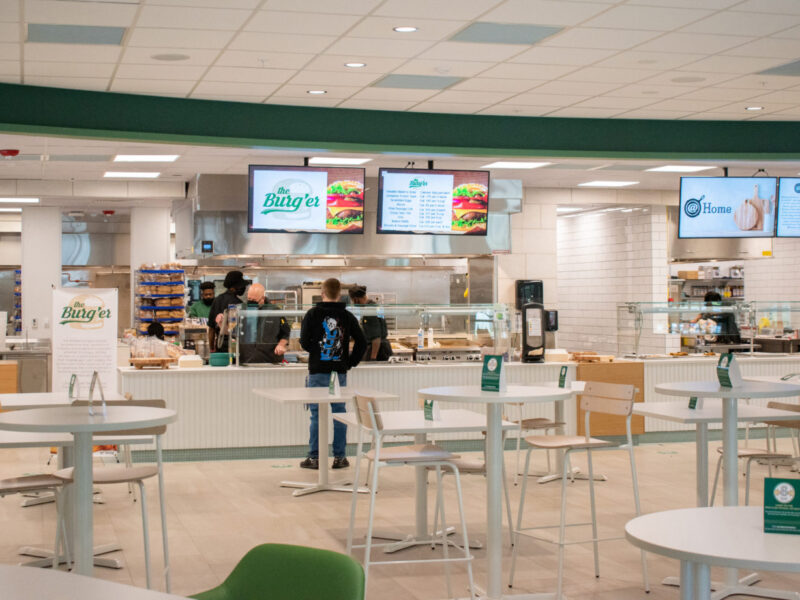
The R/V Weatherbird II is the research vessel used by the College of Marine Science. The 115-foot, 194-ton ship joined the fleet in 2009, and has since carried out numerous missions investigating the effects of the Deepwater Horizon oil spill.
Brad E. Rosenheim uses a newly-discovered technique to recreate ancient ocean temperatures.
Imagine developing a system that helps scientists recreate ocean temperatures from thousands of years ago.
Brad E. Rosenheim, Ph.D., an assistant professor of marine science at USF St. Petersburg, developed “Ramped PyrOx,” a technique to do just this with the method of “clumped isotope thermometry.”
With “isotopic measurements,” scientists are better able to understand past changes in ocean temperature, which has implications for past ocean circulation and, most importantly, the distribution of heat and carbon-dioxide around the planet. This is something that can help scientists predict how things will change in the future.
On Jan. 6-9, the university’s College of Marine Science will host the 5th International Clumped Isotope Workshop. Scientists from all over Europe, Israel, Japan, China and North America will be on campus to discuss how to improve these measurements and become even more precise in temperature reconstructions of the geologic past.
Rosenheim, 38, said that this invention helps determine “paleotemperatures,” or past temperatures.
“We’re looking at how the ocean has changed through geologic times. We’re looking at creatures made from calcium carbonate (shells) that lived in the ocean,” he said. “The method of clumped isotope thermometry (more precisely mass spectrometry of different isotopologues), basically measures the amount of ordering in a substance.”

Ryan Venturelli, a geological oceanography doctoral student, was drawn to the program by Dr. Rosenheim’s research. She is studying clumped isotopes, a method developed by John Eiler in the early 2000s.
This is related to the temperatures under which these organisms formed.
Rosenheim said that the method works by mixing calcium carbonate with acid to generate carbon dioxide gas. The isotopic compositions of carbon and oxygen are measured from gases heated up to 1,000 degrees Celsius, a temperature which maximizes entropy (disorder of the system).
“We can analyze past temperatures of systems on Earth…with great accuracy,” Rosenheim said. This is an improved accuracy compared to more traditional methods of paleothermometry.
During the January workshop, scientists will also discuss research on other fronts.
“The first workshop was in 2010, so it is a relatively young field,” Rosenheim said. “I am happy to see USF playing host to the workshop. It is a chance to show a small, international community how cutting-edge we are.”
Rosenheim’s work and next month’s workshop are the latest achievements for the university’s widely respected College of Marine Science, which is based on an 11-acre finger of land that juts out into the Gulf of Mexico between Bayboro Harbor and the Port of St. Petersburg.
Although the college reports to the provost on the Tampa campus, its faculty, students and research are all in St. Petersburg, which has one of the largest marine science research complexes in the Southeast.
The complex bears the name of the late C.W. Bill Young, who as a longtime congressman arranged much of its federal funding. The Florida Fish and Wildlife Research Institute and Florida Institute of Oceanography are also part of the complex.
The College of Marine Science, which according to its website has 23 full-time faculty members and an average of 100 graduate students, gets about $21 million a year in research funding and deploys two marine research vessels out of Bayboro Harbor.

The college’s research on the effects of the catastrophic Deepwater Horizon oil spill in the Gulf of Mexico in 2010 has drawn national attention.
Geological oceanography doctoral student, Ryan Venturelli decided to come to USFSP primarily because of Rosenheim’s research.
“I was attracted to the program by some of the research that Dr. Rosenheim described regarding the burgeoning field of clumped isotopes when I contacted him about potential research projects,” said Venturelli.
“I would describe my work in the field of clumped isotopes as fun,” he said. “Don’t get me wrong. The work is complex and challenging, but I’m having a blast learning and immersing myself in this research.”
Cristina Subt, a second-year doctoral student of geological oceanography, has been to Antarctica twice to collect samples for this method. She says this is the only active laboratory worldwide doing this age models for this Antarctic’s marine sediments.
“What I was doing was collecting cores and taking samples from those cores. In Antarctica, the only way that you can get age models is by this method,” Subt said. “This is because traditional dating methods are not possible in Antarctica. The forum is the best stage that you can get from marine sediments, but in that sediment clumps are really weird and most of the time you’re not going to find them at all.”
Information from the USF College of Marine Science website was used in this report.
** For more information about the program call (727) 553-1130 or go to www.marine.usf.edu
Headline: College of Marine Science, by the numbers
23 Full-time faculty members
84 Research and technical associates
100 Graduate students (on average)
2 State of Florida research vessels
$21 million Amount of research funding per year
Source: College of Marine Science


